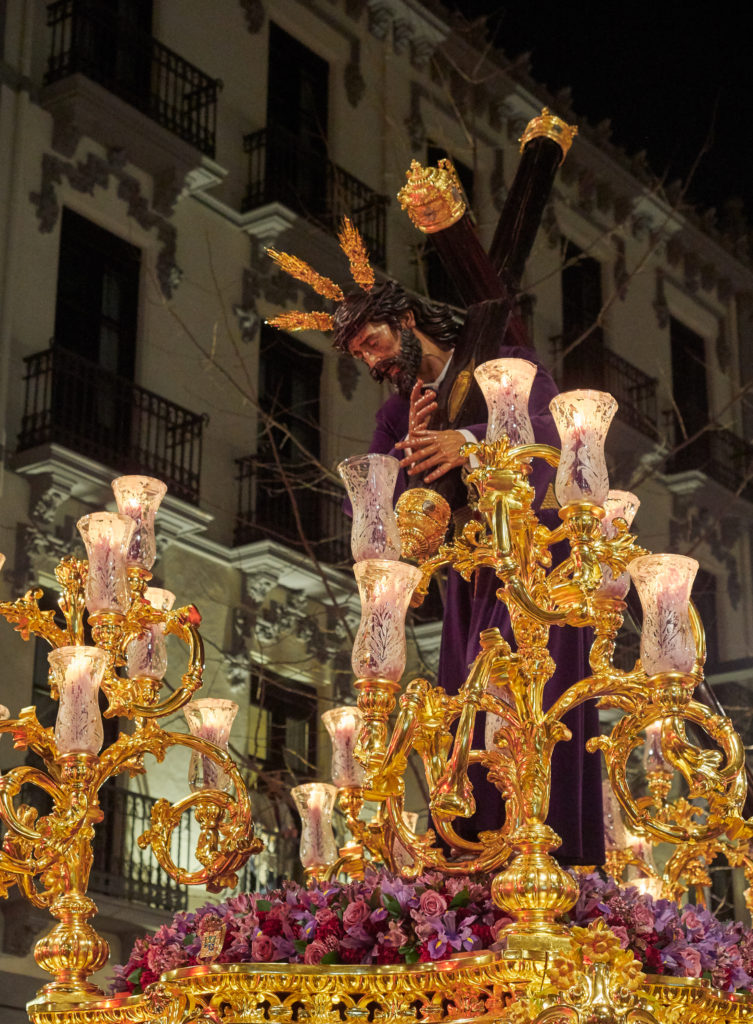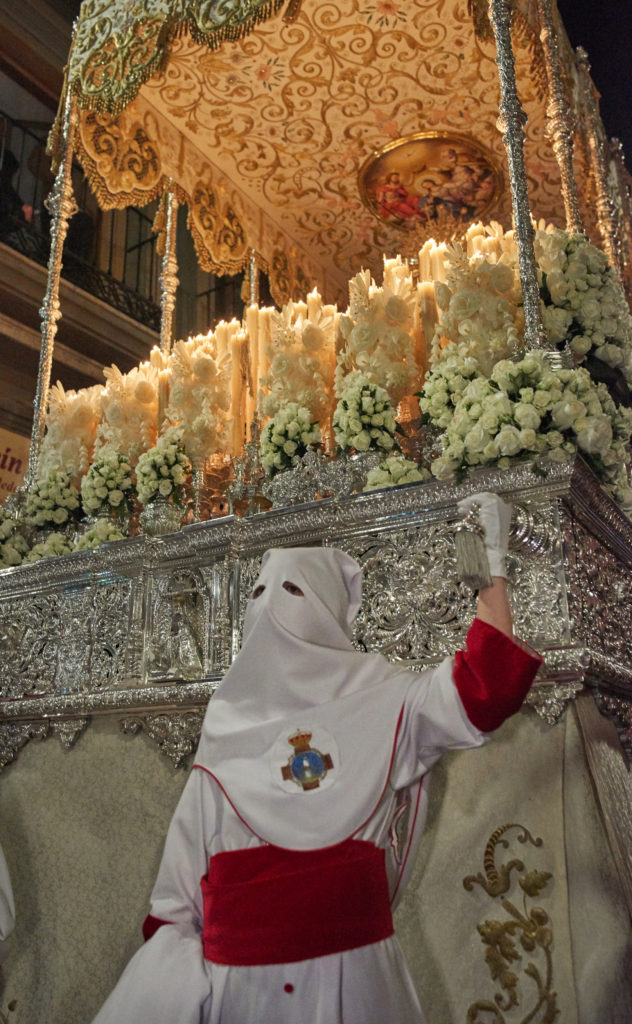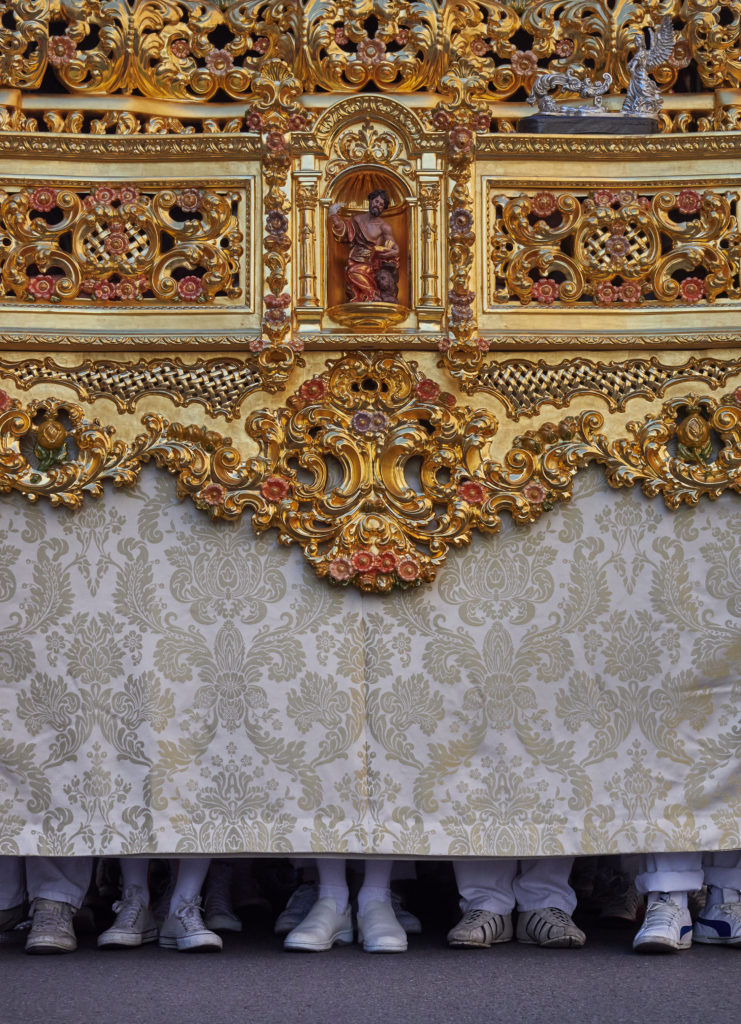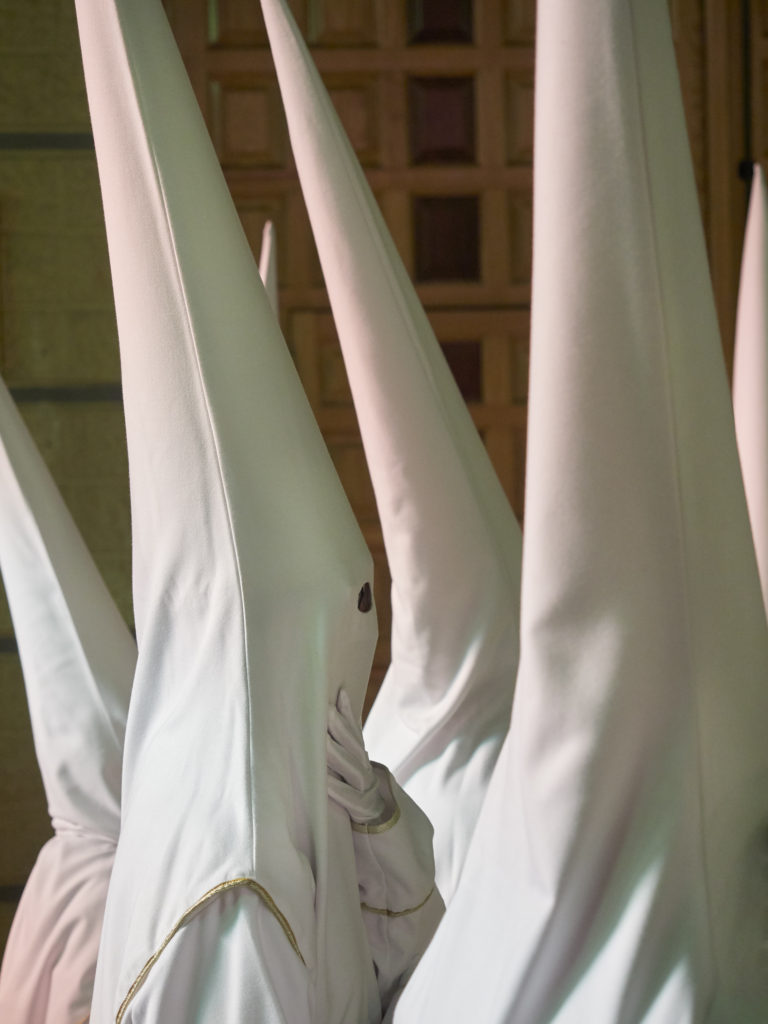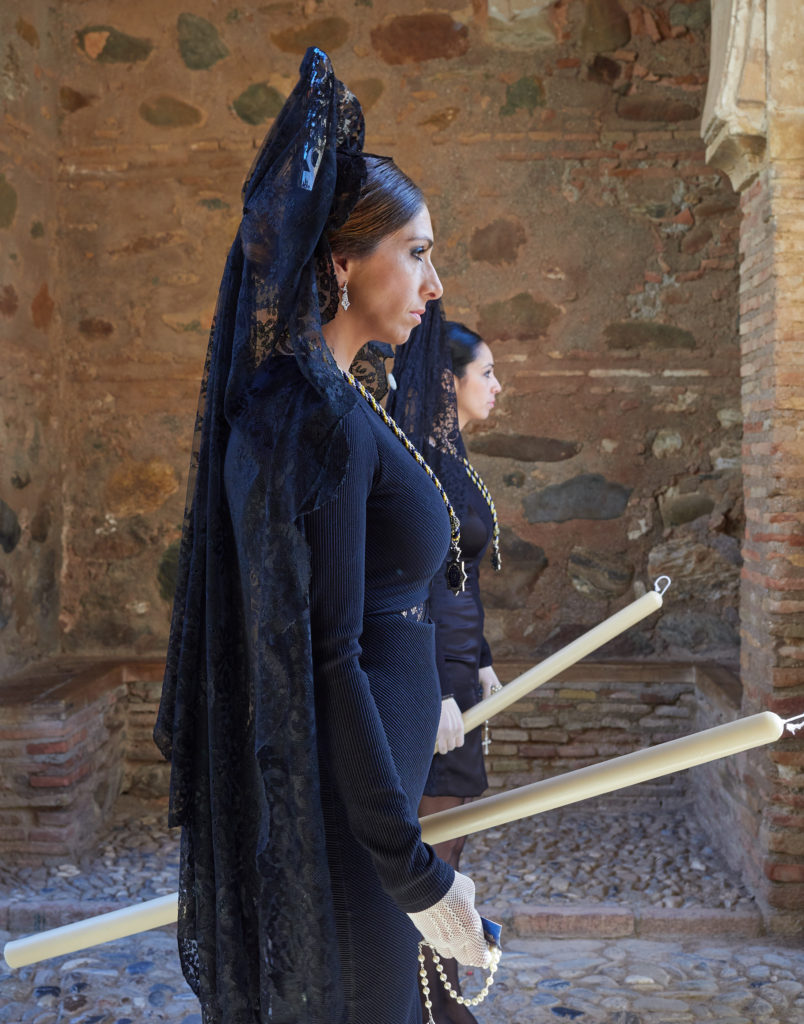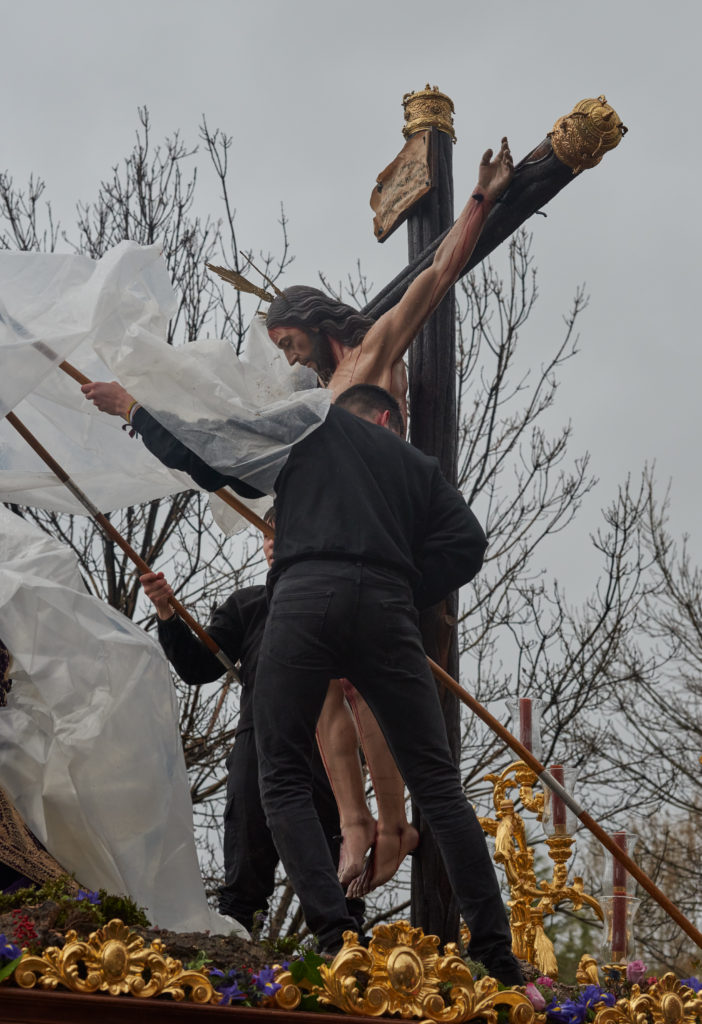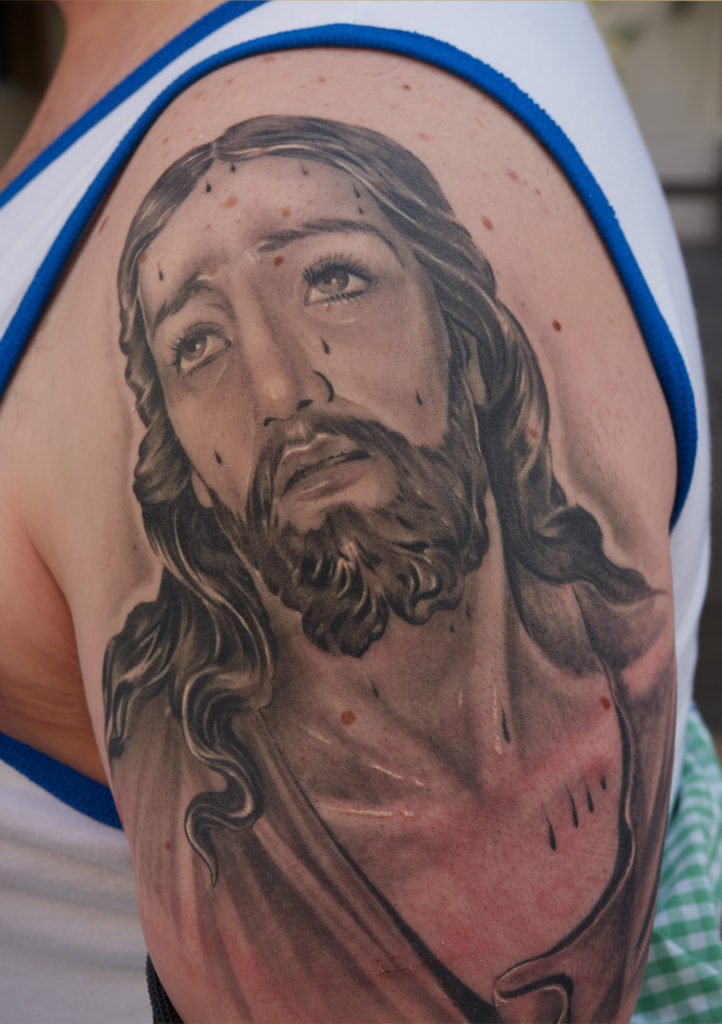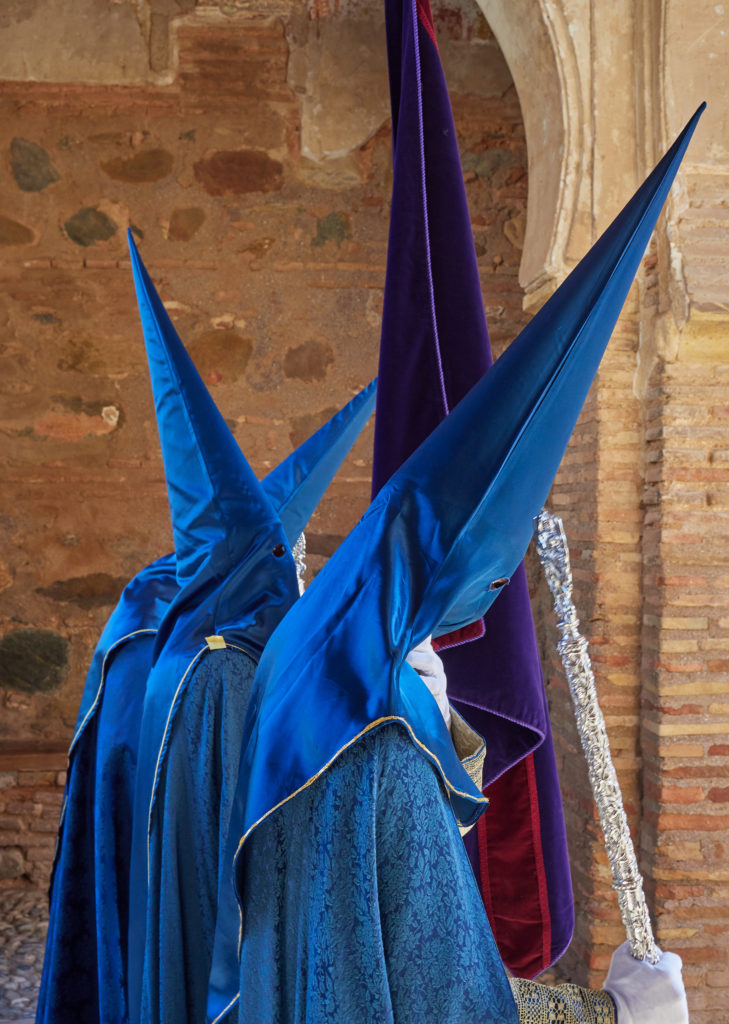
Spain is famous for its Holy Week (Semana Santa) traditions. It’s a tribute to the passion of Jesus by Catholic brotherhoods, with processions on the streets of almost every Spanish city during the week before Easter. The brotherhoods have their origins in the Middle Ages, though a number of them were created later during the baroque period.
Elaborately decorated floats (pasos) with wood or plaster sculptures of Jesus and Virgin Mary are carried through the streets from their parish church to the cathedral and back. The Pasos can weigh up to five metric tons. In front of them walk the Penitentes, dressed in long robes, followed by women in black carrying candles, groups of Nazarenos, and brass bands comprising up to a hundred persons. Good Friday (commemorating the crucifixion of Jesus) is the climax, when the processions leave the churches at midnight and arrive at the cathedral at about 2:30 in the morning.
The dress of the Nazarenos reminds of images of the Ku Klux Klan in the US. While these outfits were adapted by the second Klan* (from 1915 to 1944) they have traditionally been used since the 15th century. The cone-shaped hoods (the Capirotes) are said to symbolise the rising toward heaven; for the same reason that cypress trees are found on Spanish cemeteries. The colors and forms of the robes depend on the particular brotherhood.
We had already visited Andalucia during the Easter week more than a decade ago, while I was still working with large format film. Now better equipped for reportage, we decided for Granada because we found an apartment right at the Plaza de las Pasiegas in front of the cathedral. Granada has more than thirty brotherhoods so we got our money’s worth.
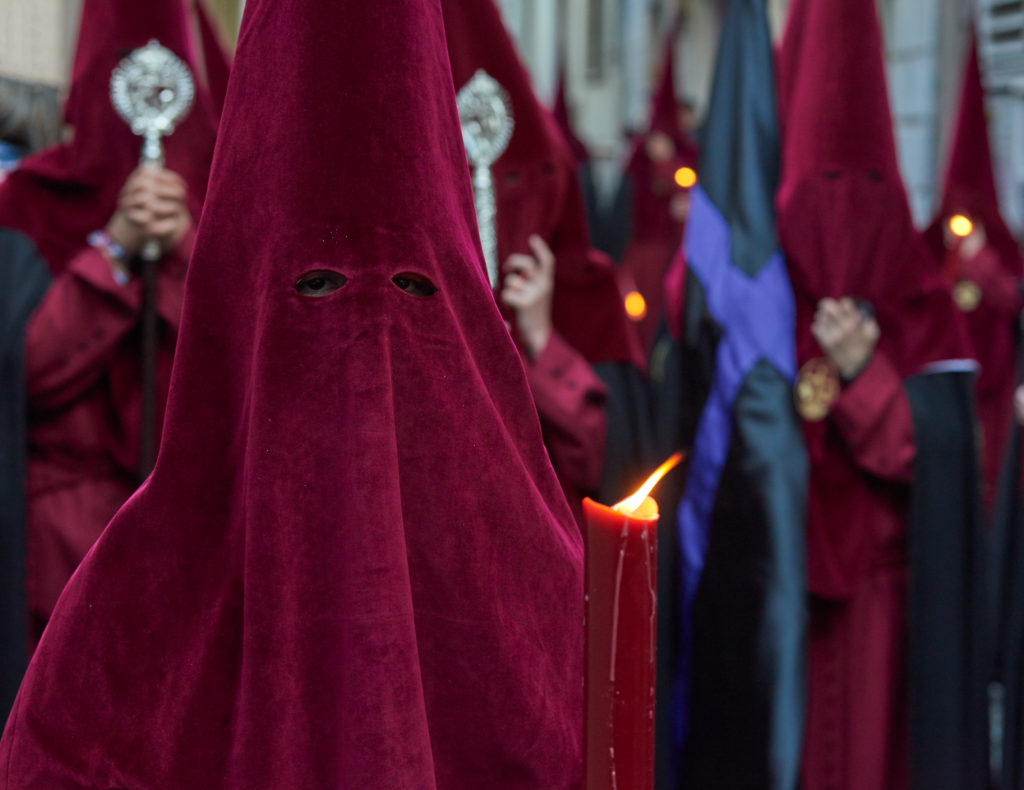
The shooting conditions were not easy though; problems of access due to the large number of spectators (in particular along the Carrera official), low light, and disturbing backgrounds (cars, signs, street lights and shop windows).
Most images were shot with the Olympus OM-D Mk II. Does that mean I have said goodbye to full frame (coming from 4×5” film originally) and settled with the tiny mircro 4/3 sensor? And is the next logical step using a camera phone?
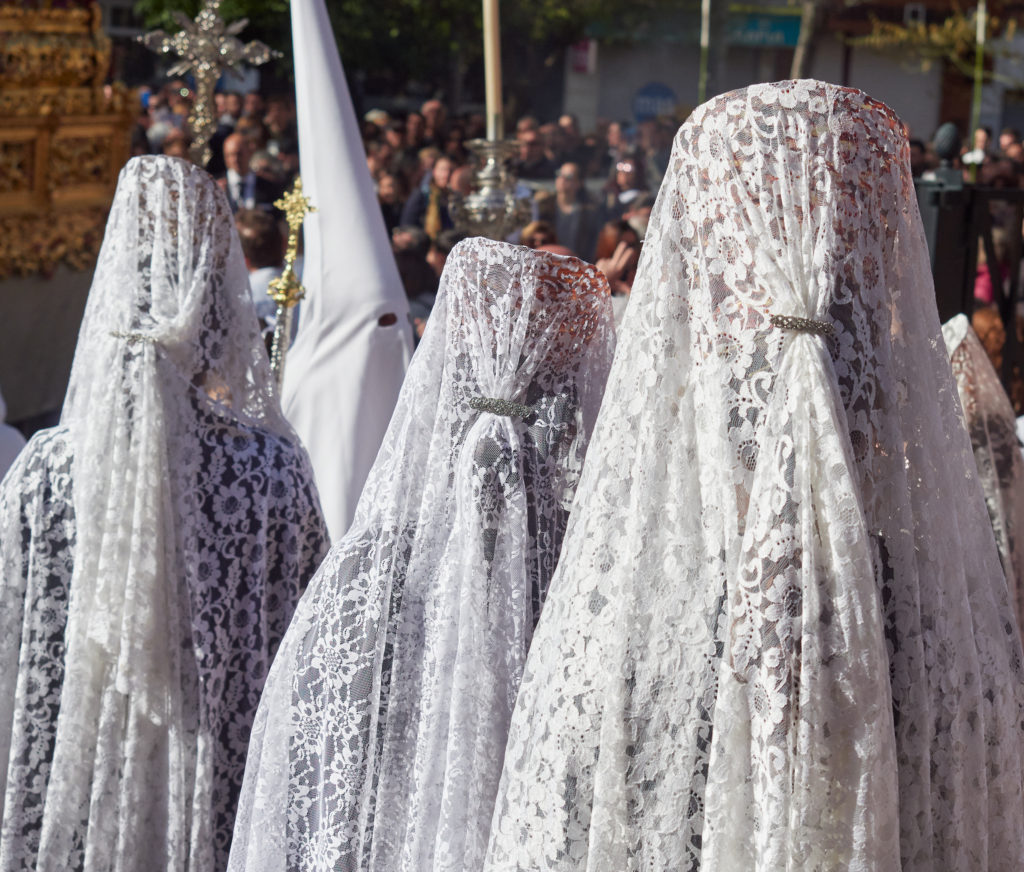
I have written on this before, using lenses with the same angle of view for the sensor sizes, and the same camera to subject distance, i.e., the same geometric parameters of optics, there is no difference attributable to format size. If the images were to look the same in terms of depth-of-field as well as framing, and you cannot use a tripod to accommodate longer exposure times, the ISO setting on the larger format camera must be increased to produce similarly bright images. But then the same noise level results for the small and large sensors, because the ISO setting amplifies the noise together with the signal (ISO invariance). Of course, a larger sensor, in general, has more pixels and therefore more resolving power. But this means nothing if you can’t avoid motion blur.
And here the Olympus shines, exhibiting no shutter shock and equipped with a very efficient in-body stabilization (IBIS) that obviously does better for smaller sensors with less inertia. Even if we don’t believe the advertised 5 to 6 stops, there is one stop to be had from the missing mirror slab, and a good three stops from the IBIS. This is why I reached for the Olympus, almost exclusively. SR
*It is interesting that the anti-Catholic second Klan modelled their regalia and insignia according to the outfit of the Nazarenos, supposedly as a malicious reference to the inquisition.
